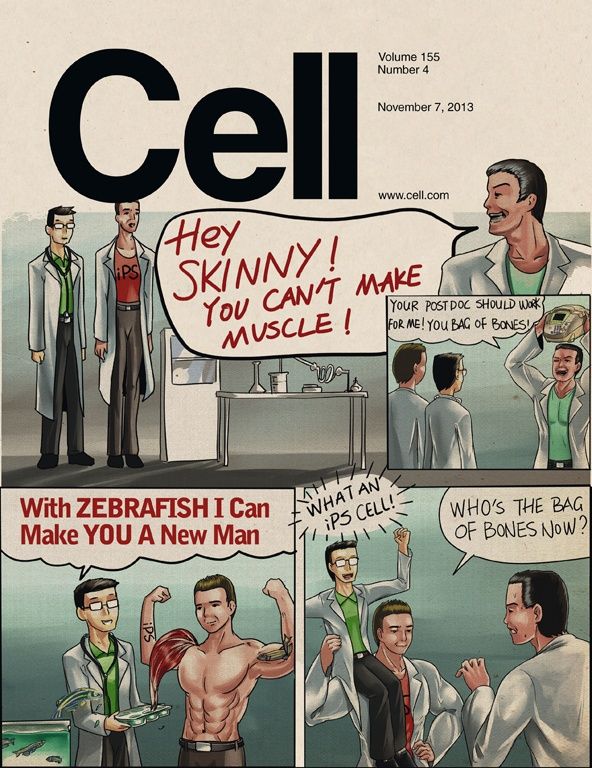博文
Cell小漫画
||

On the cover: The cover tells the story, reported in Xu et al. (pp. 909–921), of an induced pluripotent stem cell (iPSC, shown here in a red t-shirt) that cannot make muscle. When a “bully” researcher tries to steal the postdoctoral fellow working with the iPSC, it's back to the lab, where the fellow uses a zebrafish model to discover chemicals that can turn the iPSC into muscle. Facing down the bully, the postdoctoral fellow rides high on his success. This concept was adapted from Charles Atlas comic advertisements related to bodybuilding. Cover artwork by Athens Qin.
这个创意太搞笑了,好久前就看到,笑了半天。enjoy摘要吧~


Ex vivo expansion of satellite cells and directed differentiation of pluripotent cells to mature skeletal muscle have proved difficult challenges for regenerative biology. Using a zebrafish embryo culture system with reporters of early and late skeletal muscle differentiation, we examined the influence of 2,400 chemicals on myogenesis and identified six that expanded muscle progenitors, including three GSK3β inhibitors, two calpain inhibitors, and one adenylyl cyclase activator, forskolin. Forskolin also enhanced proliferation of mouse satellite cells in culture and maintained their ability to engraft muscle in vivo. A combination of bFGF, forskolin, and the GSK3β inhibitor BIO induced skeletal muscle differentiation in human induced pluripotent stem cells (iPSCs) and produced engraftable myogenic progenitors that contributed to muscle repair in vivo. In summary, these studies reveal functionally conserved pathways regulating myogenesis across species and identify chemical compounds that expand mouse satellite cells and differentiate human iPSCs into engraftable muscle.
https://blog.sciencenet.cn/blog-982855-740637.html
上一篇:PNAS发表减数分裂发育相关表观遗传改变
下一篇:博后面试经过
全部作者的其他最新博文
- • 一个悲伤的故事
- • 我怀念的
- • 巴德年院士科大报告语摘——受益匪浅
- • 这是个黑童话么?——MC封面文章
- • 你是猴子请来的啥?